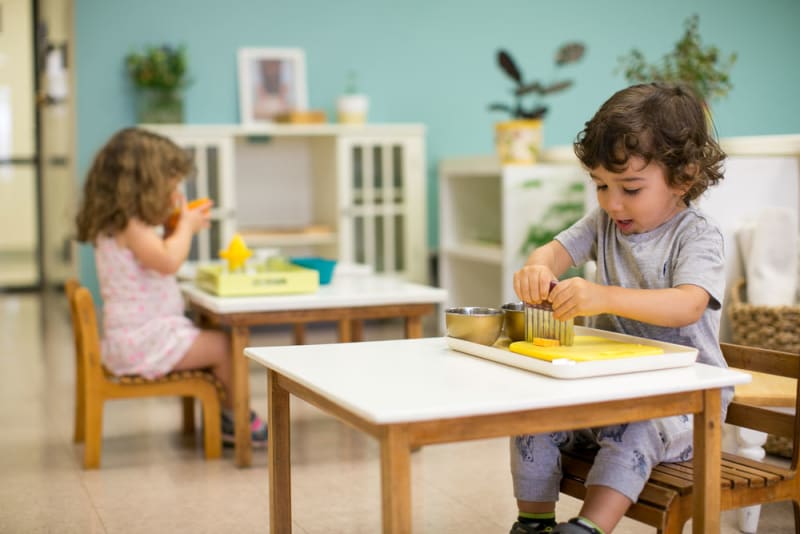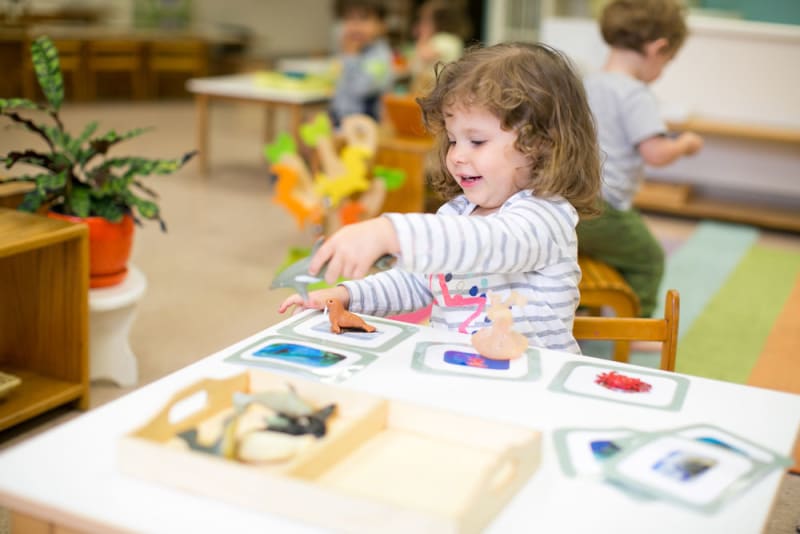The Post Oak School is an educational leader—both among Houston’s top private schools and among the more than 5,000 Montessori schools across the country. Post Oak has operated continuously since 1963 and is a non-profit corporation. With a faculty and staff of over 100, we provide a culturally diverse student population with a comprehensive education founded on AMI Montessori principles from early childhood through high school.
At Post Oak, we help children understand the world, not just because the world is infinitely interesting and learning is fun. We help them understand it so they’ll know how to make it a better place. We emphasize reading, math, and science because they open doors into the world. We emphasize independence, self-direction, and choice because they help young people identify which doors they want to walk through. We emphasize collaboration, cooperation, and peace because, ultimately, we know that neither we nor our children walk alone.
Rebecca Duran, Young Children’s Community Lead Teacher

When my friends ask me how my work is going at “the—what is it? Daycare?” I smile and say, “It’s a school, and I am a Montessori guide.” The next question or comment is something along the lines of, “Oh. But don’t you work with babies?” “I work with toddlers, ages 14 months to about two-and-a-half years old.” (Blank stare) “What do you do?” (I smile) “I am so glad you asked!”
The question of the difference between a Montessori toddler environment and a traditional daycare is one that is weighed by many people, especially parents. More and more parents are learning about the Montessori Method and, thanks to books like The Montessori Toddler by Simone Davies, which is an Amazon bestseller, and companies like the Shark Tank-invested Montikids, that number is likely to increase. So, what are the differences between quality Montessori toddler environments—often referred to as a young children’s community (YCC)—and traditional daycare? If you find yourself as a parent trying to understand the difference or, like me, you are educating your friends, family, and acquaintances on how working at a Montessori school with toddlers is not the same as a daycare, here are some standout differences.
A Prepared Environment
When you first see a Montessori toddler environment, it’s hard not to gush over all the small things! From precisely made furniture to art that is hung extra low, it is unquestionably designed for a very young child. But perhaps small furniture is something that daycares and YCCs have in common. Here’s where the Montessori environment gets extra special: it is designed with low shelves that hold developmentally appropriate materials that invite the children to explore freely. The Montessori classroom is called the prepared environment, and it serves as the link between the guide (teacher) and the child.
Through it, there is a range of materials (or what we refer to as “work”) that is intentionally chosen to be offered to the young child. The activities are a balance of self-teaching materials and purposeful activities. Examples of work range from an array of sensorimotor materials like lock and latch boards and gradually more difficult puzzles to “Practical Life” activities like food preparation and flower arranging (and really, so much more!). This is different from a daycare environment because, through the offering of such “work” to which they have been trusted with free access in a beautifully prepared environment, the child is given the opportunity to engage in purposeful activity that is worthy of them.

Child-led vs. Teacher-led
At the core of every Montessori environment is Dr. Montessori’s mantra of “follow the child,” and when you are literally following someone, you are not ahead of them—you are somewhere in the background observing what is occurring before you. In a Montessori toddler community, the guide leans on the prepared environment and the inherent need of the young child to “do it myself,” and steps in minimally when needed. Dr. Montessori stated that “it is necessary for the teacher to guide the child without letting him feel her presence too much, so that she may always be ready to supply the desired help, but may never be the obstacle between the child and his experience.”[1] Toddlers leading their studies through independent choices and unique exploration promotes learning that is not passive like it could be in other teacher-led and time-restricted environments. Furthermore, when the guide is in the background, the children become the teachers. Also, the mixed age group in a YCC allows older students to model expected behavior as well as reinforce their learning by helping younger students.
The Gift of Time
In Montessori, the flow of the day is more of a rhythm when arrivals and dismissals, snacks, and outdoor play occur within a window of time, and two hours of the day are devoted to uninterrupted exploration and discovery. This differs from daycares where each day has a schedule and often an agenda planned for every hour of the day.
In support of the time that is needed for acquiring independence in say, dressing, or an activity like table scrubbing, there is a 1:6 teacher-child ratio, with some Montessori schools even having a 1:4 ratio. Most daycares have a 1:12 ratio, inducing the teacher to do things for the children. A smaller ratio allows for the guides of a community to support toileting, give presentations, and observe children at work all at the same time! As a result, as Dr. Montessori declared, “A child who has become master of his acts through long and repeated exercises, and who has been encouraged by the pleasant and interesting activities in which he has been engaged, is a child filled with health and joy and remarkable for his calmness and discipline.”[2] When the young child is given time with no restraints of a set schedule that applies to the entire group, independence and creativity can be fostered.

The Immaterial
“If we want many more children to lead fulfilling and productive lives, it’s not enough for schools to focus exclusively on academics. Indeed, one of the most powerful and cost-effective interventions is to help children develop core social and emotional strengths like self-management, self-awareness, and social awareness—strengths that are necessary for students to fully benefit from their education, and succeed in many other areas of life.” David Bornstein, from an article entitled “Teaching Social Skills to Improve Grades and Lives,” New York Times (July 24, 2015).
The formula of children creating their learning, unrestricted by time in a meticulously prepared environment, produces outcomes that are beyond the physical. Through daily occurrences, toddlers in a YCC learn patience and respect through daily instances like waiting for a friend to return an activity to the shelf that they want to explore. Self-awareness is heightened through a language-rich environment where feelings are named and given an appropriate outlet to be expressed. Grace and courtesy, which is a component embedded within the Montessori curriculum, is consistently modeled by the guide and is, in turn, practiced by the children. Lastly, the path towards independence is paved through the understanding that it can’t be forced; it must be given the time to unfold through collaboration and exploration. These are the immaterial yet valuable qualities that set apart a Montessori toddler community from traditional daycare.
The Real Question to Ask
While the list of differences between a Montessori toddler environment and a traditional daycare could go on and on, perhaps the question to ask when weighing the decision of where to send your toddler should really be, “How will this environment best support my child?” Dr. Montessori, in all her wisdom, declared that “to assist a child we must provide him with an environment which will enable him to develop freely.”[3] When such an environment is found, the choice is obvious.
[1] Maria Montessori, Dr. Montessori’s Own Handbook: A Short Guide to Her Ideas and Materials, 1988
[2] Maria Montessori, The Discovery of the Child, 1986
[3] Maria Montessori, The Secret of Childhood, 1982
LEARN MORE ABOUT THE POST OAK SCHOOL
This article originally appeared in The Post Oak School
